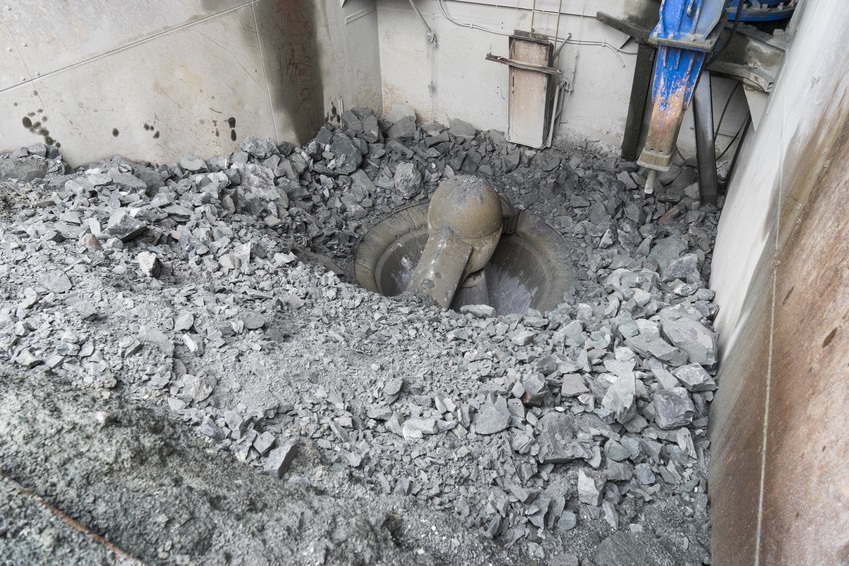Troubleshooting and optimization of the dedusting system of the crushing sector of a ferrosilicon smelter (GA7)
ISSUE
In the crushing sector of a ferrosilicon smelter, ferrosilicon ingots are discharged over a grizzly and broken into coarse pieces using a jackhammer. This primary crushing stage is done in an enclosed area. Once broken, the pieces of ferrosilicon are further crushed and screened before being stored into charging hoppers. At each of these stages, capture hoods are installed to prevent dust from escaping and entering the smelter area.
However, during the jackhammer crushing operation, dust clouds are generated despite the existing ventilation system of the enclosure. These clouds are so dense that they force the shutdown of the jackhammer operation while the cloud is dissipating, which causes productivity losses in the sector. A measurement campaign also demonstrated that the sector's ventilation network operates at approximately 80% of its rated capacity. This lack of capacity regularly causes ventilation problems at the other equipment in the sector.
TECHNOLOGICAL CHALLENGE
Identify the cause of the lack of ventilation capacity of the crushing area and improve the dust collection efficiency of the jackhammer enclosure to eliminate the dust clouds generated during ingots breaking activities.
RECOMMENDED SOLUTION
An audit of the entire ventilation network of the crushing sector was carried out. Based on the information collected during the audit, a reverse engineering study of the complete ventilation network of the sector was carried out. This engineering study identified the causes for the lack of ventilation capacity at the various capture points. The necessary corrective measures to restore an adequate ventilation rate throughout the sector and to improve the ventilation of the jackhammer enclosure could then be defined and proposed to the client.
RESULTS
As a result of this study, it was determined that the ventilation rate of the ingot breaking enclosure should be increased by a factor of 3 to prevent the formation of dust clouds. It was also determined that changes to the ductwork were necessary to restore adequate ventilation rates, due to deficiencies in the design of the system. To solve this problem, a re-distribution of the flows sent to the various dust collectors of the sector has been proposed to the client. This new configuration results in a more suitable layout of the overall duct network. Straightforward modifications to the enclosure dust collection hood and to the dust collectors and their associated fans have also been recommended to achieve the new ventilation capacity target for the ingot breaking enclosure.

EXPERTISE
Gas treatment
Dust collector
Industrial ventilation
INDUSTRY
Mines and Foundry
Ferrosilicon Smelter
Crushing Sector
TASK PERFORMED
Audit
Reverse Engineering
Troubleshooting & Optimization